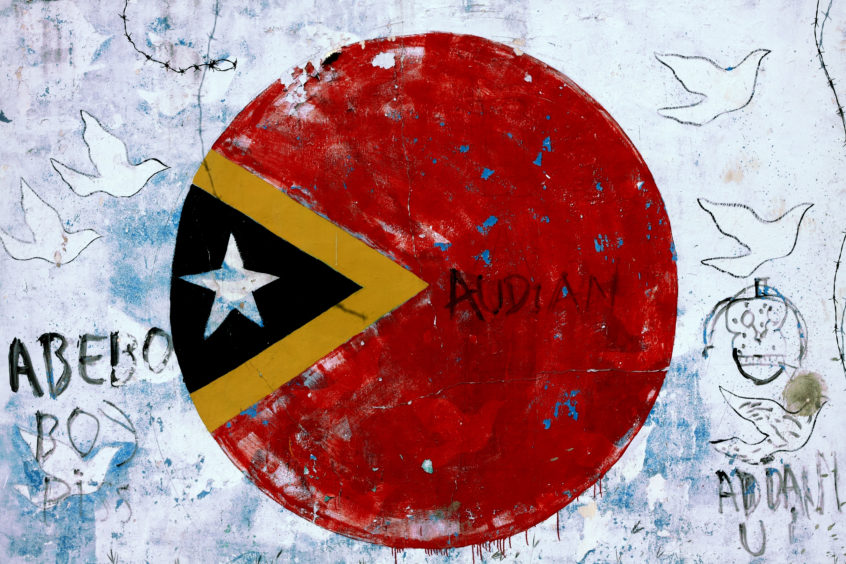
Australian company Timor Resources will drill three exploration wells onshore East Timor as the nation hopes for commercial success. The three wells will be drilled as part of a back-to-back campaign that started late October.
Timor Resources recently spudded the first onshore well in East Timor, also known as Timor Leste, in more than 50 years. “Geopolitical issues and civil unrest have kept out exploration activities until now,” Suellen Osborne, chief executive of Timor Resources, part of diversified manufacturing and engineering company Nepean Group, told Energy Voice.
“The first well is called Karau (Government of Timor-Leste are calling it Feto Kmaus) and was spudded on October 27, 2021. The total planned depth is 1050m. It will take 17 days to drill. Drilling results will be known quickly,” said Osborne.
Timor Resources was awarded a production sharing contract (PSC) by East Timor’s regulator ANPM in June 2017. The company operates the PSC on behalf of its joint venture partner TimorGap, the nation’s national oil company. They have completed two seismic surveys across the acreage in 2018 and 2019.
“Drilling is a very exciting time for the nation as there is high expectations that this will be a successful campaign,” added Osborne.
“The prospectivity of East Timor onshore has long been discussed but has remained undrilled. The last well drilled in the land was in 1972, and that was a discovery in this acreage,” said Osborne.
Historically four wells have been drilled in the company’s contract area TL-OT-17-08. “In 1969 to 1972 there were oil discoveries, but they were drilled without seismic. They were drilled based on the surface oil seeps and not on the structure,” she added.
The Karau exploration well has a 26% chance of geological success, according to Timor Resources. Drilling is being carried out after a 2D seismic campaign was completed in 2019.
Karau Characteristics
The Karau prospect is in the south – central part of the contract area, in PSC TL-OT-17-08 near the Suai township. The primary target is a Viqueque Stratigraphic Pinchout edge south of the Matai Anticline. At the crest of the Matai anticline the Viqueque is absent or thin and discontinuous. On the flank of the anticline the sands and conglomerates thicken and become more continuous. Beneath the Pinchout are structural closures within the underlying Viqueque.
The Pinchout comprises an upper and lower section with upper, mid and base unconformities. The lower interval dips more steeply than the upper. The projection of the base unconformity to surface is broadly coincident with the location of oil seeps.
The analogous Bula field in Seram has produced greater than 20 million barrels of oil, but modern drilling technology and sub-surface delineation will greatly reduce the number of wells required, compared to Bula, said Timor Resources.
Target in Karau
The primary reservoir target is a sub-basin edge pinchout of turbiditic sandstones and conglomerates within the Pliocene Viqueque succession. Numerous shallow pits and core holes encountered oil saturated sand.
Secondary Viqueque targets reside beneath the Pinchout; the structural crests of the Upper and Lower Viqueque leads lie to the east and the well intersection is low on potential closure. Evaluation of stratigraphy, reservoir quality, indication of migration and pressure gradient warrants deepening to these targets.
Key Observations of Karau
Oil seeps and well recoveries in the Matai area indicate an active petroleum system. Over 10,000 barrels of oil have been recovered from pits in this area.
Analysis of oil indicates that the migration is most likely from a mid-late Triassic source.
Confidence of the operator comes from the correlation of seismic character and amplitude of the Viqueque sands to well logs reduce the reservoir risks, with multiple high amplitude reflectors within the Pinchout.
Timor Resources is expecting to find recoverable oil greater than 31 million barrels in the Karau field.
Next Wells
The second and third wells – will be drilled as part of a back-to-back campaign, with the second well starting in November 21 and the third to be drilled in the first week of February 2022, said Osborne. These exploration wells target different geological play types.
“Regardless of success or failure in the first two wells, Timor Resources has committed
itself to complete all three wells. These wells will meet the entire obligation under the PSC and will result in the carry of TimorGap being depleted. TimorGap will be obligated to contribute capital for all other parts of the exploration program at the end of the three-well drilling campaign,” she told Energy Voice.
Oil Bonanza?
Any significant oil discovery would provide a welcome windfall for East Timor, which has been heavily reliant on revenues from oil and gas. But production from its sole producing field Bayu Undan is waning and operator Santos expects to shut down the field within a couple of years.
Significantly, there is a long way to go before any discovery and commercial production potential is proven onshore East Timor, if ever.
But if Timor Resources can find, and commercially produce 31 million barrels of oil from the Karau field, then that would generate total sales revenues of $1.86 billion based on oil selling for an average $60 per barrel. However, that is before any development and production costs are deducted.
As part of the production sharing contract (PSC) Timor Resources will recover its costs first. Then, after government royalties, taxes and operating costs are paid on any potential oil production, the remaining petroleum profit will be split 60:40 in Timor Resources favour.

